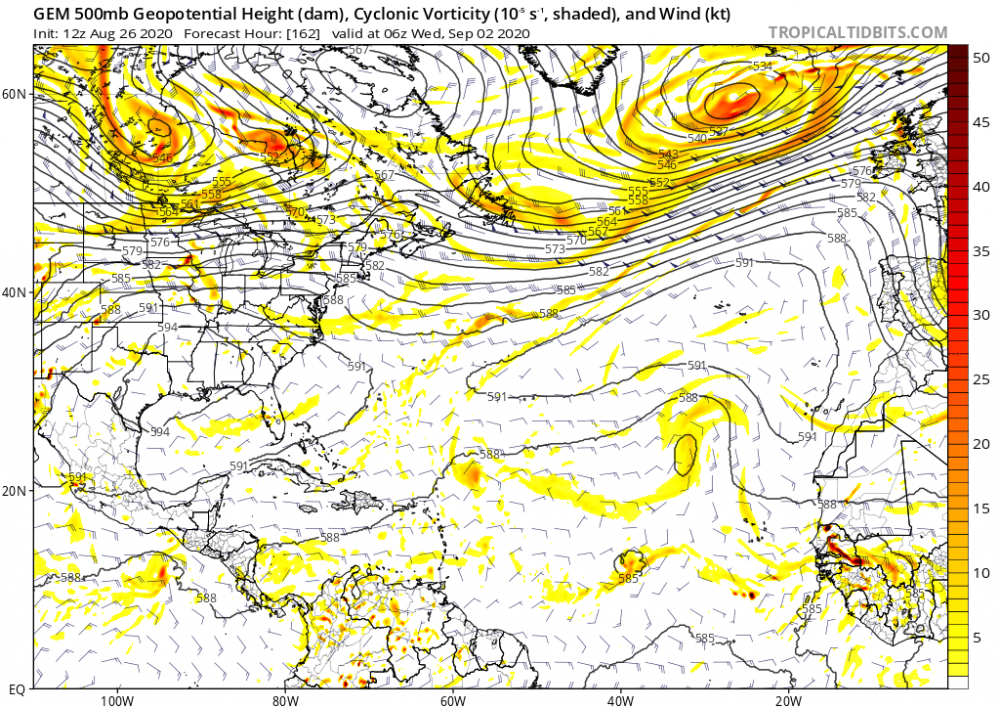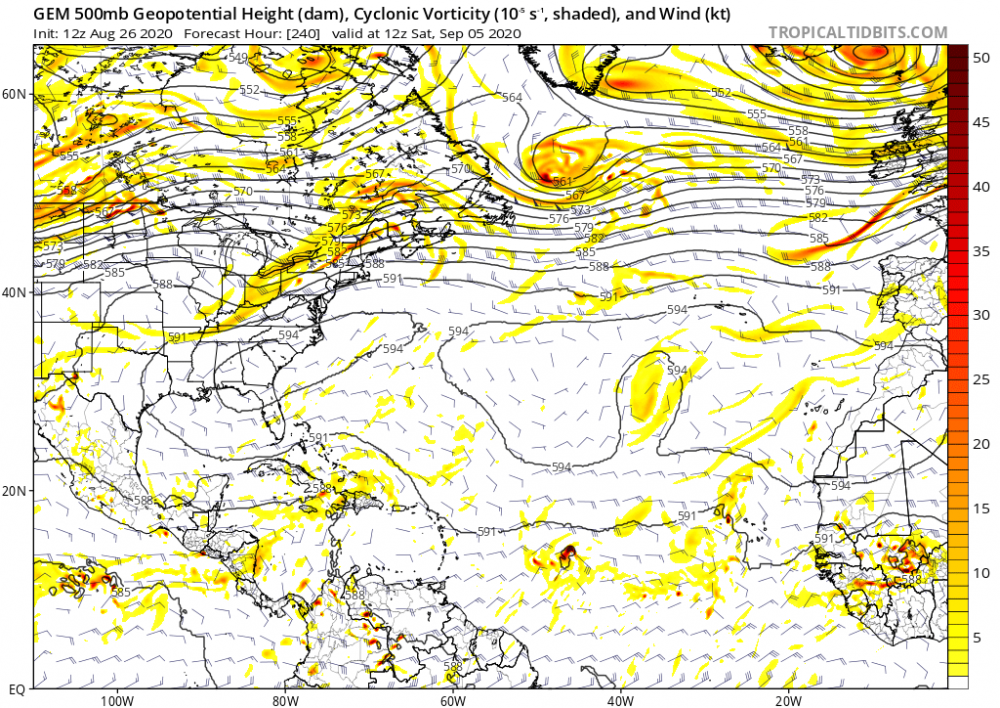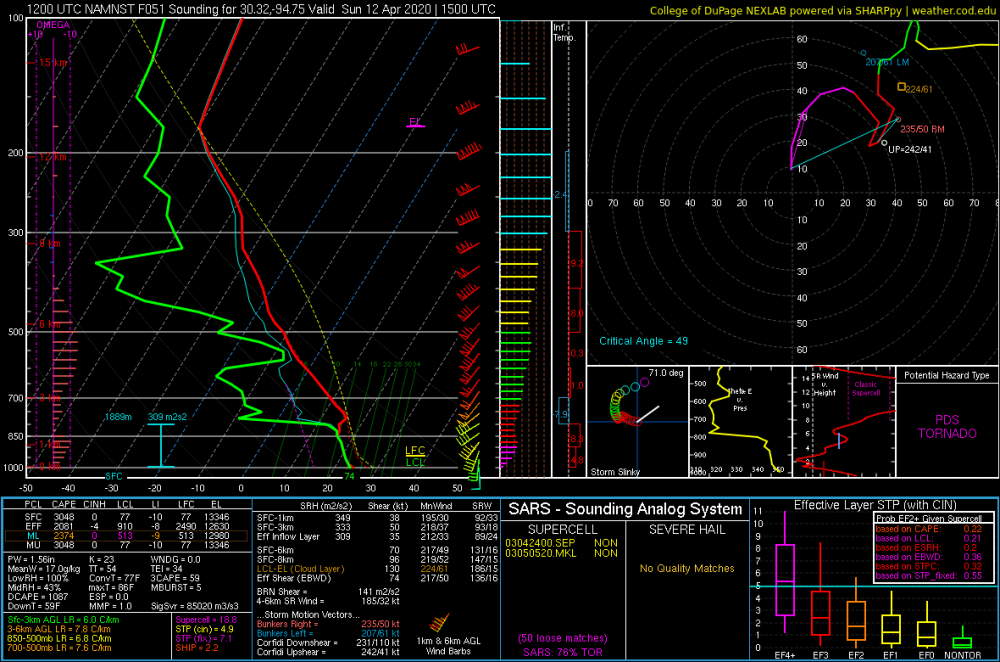
Tallis Rockwell
Members-
Posts
159 -
Joined
-
Last visited
Content Type
Profiles
Blogs
Forums
American Weather
Media Demo
Store
Gallery
Everything posted by Tallis Rockwell
-
I watched tons of fairly odd parents as a kid before I got into anime and comics. Too bad the show sucks now.
-
Can't come with a rhyme I am just too itchy...
-
No one cares about Icky Vicky dude...
-
2020 Atlantic Hurricane Season
Tallis Rockwell replied to Windspeed's topic in Tropical Headquarters
That's the worst type of development one day, tropical storm, literally 12 hours later it's a cat 2 The new gulf disturbance is in warmest part of the gulf. So that could turn ugly -
2020 Atlantic Hurricane Season
Tallis Rockwell replied to Windspeed's topic in Tropical Headquarters
This will go down history has a weird and interesting hurricane season as we might run out of names before October but with some relatively low ACE. -
2020 Atlantic Hurricane Season
Tallis Rockwell replied to Windspeed's topic in Tropical Headquarters
Y'all hear sumthin? -
2020 Atlantic Hurricane Season
Tallis Rockwell replied to Windspeed's topic in Tropical Headquarters
First northeast impact, tropical storm, Second northeast impact, hurricane, Third northeast impact, Major hurricane? Sounds like 2020 to me! -
2020 Atlantic Hurricane Season
Tallis Rockwell replied to Windspeed's topic in Tropical Headquarters
CMC has the best record for picking up on tropical activity this year. 500 mb vorticity shows 3 areas I am interested in. It could just be my overactive imagination but there are 3 patches of vorticity that could Nana, Omar, Paulette(?) The most impressive one is forecast to be a tropical storm, there another less impressive one behind it, and a weak disturbance that moves in the very high potential Caribbean. This over a week after Marco and Laura so I am sure the waters would have recovered. Don't pay too much attention to intensity after CMC has Laura as 980-something low right now! -
2020 Atlantic Hurricane Season
Tallis Rockwell replied to Windspeed's topic in Tropical Headquarters
Don't feed the troll just ignore him. -
Why does NHC think Marco is going to strength further with the shear? Data from an Air Force Reserve Hurricane Hunter aircraft indicate that maximum sustained winds have increased to near 50 mph (85 km/h) with higher gusts. Additional strengthening is forecast during the next couple of days as the system approaches the Yucatan peninsula, and Marco could be near hurricane strength when it moves over the central Gulf of Mexico Sunday night and early Monday. Is the shear going to move away from the storm? I was under that impression.
-
Nasty but how will the shear progress?
-
All that focus on Laura, while Marco might've always been the real threat. How bad is the shear? I didn't see much of it yesterday. (Then again the models have been sh!^.)
-
That shows potential I guess but land interaction is going to inhibit it. The models, I think, are underestimating it a bit. Not a lot of shear or dry air and some good warm water.
-
No one is showing TD 14 any love!
-
2020 Atlantic Hurricane Season
Tallis Rockwell replied to Windspeed's topic in Tropical Headquarters
The models are all over the place for both disturbances from major hurricane to literally nothing. Sounds fun. -
2020 Atlantic Hurricane Season
Tallis Rockwell replied to Windspeed's topic in Tropical Headquarters
This coronavirus lifestyle has been my life for almost all of my 20 years so nothing has changed for me this year! I should probably see a therapist though. -
2020 Atlantic Hurricane Season
Tallis Rockwell replied to Windspeed's topic in Tropical Headquarters
Why in the world are so many disparaging this season!? "It's not as intense as 2005 or not a lot of intense systems so far." It hasn't reached the seasonal peak yet! Still ten more days until things actually become favorable for more intense storms. So what if it isn't like 2005? 2017 had fewer hurricanes and lower ACE but was costlier and had a comparable death toll. 2005 should never be the bar minimum for an active season or even hyperactive season. After the largest dust plume in 50 years, sinking air masses, considerable shear, and after factoring out some of the less impressive systems,THE SEASON IS STILL IMPRESSIVE. The models aren't infallible especially this far out and this season's model performance have not been impressive. Sure it's possible that the shear doesn't go down and the dry air continues for the rest of the year but nothing has come to suggest that. -
2020 Atlantic Hurricane Season
Tallis Rockwell replied to Windspeed's topic in Tropical Headquarters
Why in the world is there literally nothing on the models? Usually I would see some fake storms by now but nothing! -
Severe Weather for 4/19-4/23
Tallis Rockwell replied to Tallis Rockwell's topic in Central/Western States
Good cell heading into Houston -
Severe Weather for 4/19-4/23
Tallis Rockwell replied to Tallis Rockwell's topic in Central/Western States
I Can't believe I missed that crap. -
Decent weekend ahead. ...Synopsis... A progressive shortwave trough will move from the southern Plains into the lower MS Valley during the day, and will continue to the GA/SC/NC coast by Monday morning. The entire southeastern region will be under the influence of strong westerly winds aloft which will strengthen as the upper trough approaches. Southwesterly 850 mb winds will increase in response to the wave, reaching 50+ kt by 00Z from MS eastward to the coast. At the surface, low pressure will develop near the ArkLaTex by late afternoon as a warm front lifts north across the southeastern states, oriented roughly from southern AR into northern MS, AL, and GA at 18Z. Meanwhile, a cold front/dryline will develop over east TX. Across the warm sector, rich moisture with 65-70 F dewpoints will result in moderate instability. The low, likely associated with widespread convection, will translate eastward along the synoptic front overnight, reaching NC by 12Z Monday. ...Southeastern states... Substantial instability will already be in place Sunday morning from TX into the lower MS Valley, with rapid destabilization expected behind the warm front farther east into GA. Midlevel lapse rates aloft will be modestly steep, averaging 6.5 to 7.0 C/km. Early day storms related to warm advection will be present over AL and GA, and they will likely be elevated with perhaps a hail threat initially. As the air mass warms, a wind or tornado threat could develop in the vicinity of this activity as it continues east. To the west, storms are likely to be severe by 18Z near the Sabine Valley/ArkLaTex. Here, long hodographs but modest low-level SRH may result in cells capable of very large hail, and perhaps an eventual MCS with damaging-wind threat. A severe wind corridor may thus develop during the day across northern MS, AL, and GA. There is also a threat of daytime supercells, possibly tornadic, as the small capping inversion is eroded by early afternoon. During the evening and overnight, low-level shear will increase further, and models suggest southern AL into GA may be a favored area for tornadoes. Bows or isolated supercells are possible into SC early Monday morning as the relatively cooler air mass is destroyed by the warm front.
-
Easter Weekend Severe Thread
Tallis Rockwell replied to janetjanet998's topic in Central/Western States
-
Easter Weekend Severe Thread
Tallis Rockwell replied to janetjanet998's topic in Central/Western States
18z NAM is showing a more some good helicity over East TX. -
Easter Weekend Severe Thread
Tallis Rockwell replied to janetjanet998's topic in Central/Western States
Decent stuff this week. Waiting for a watch in central Texas







